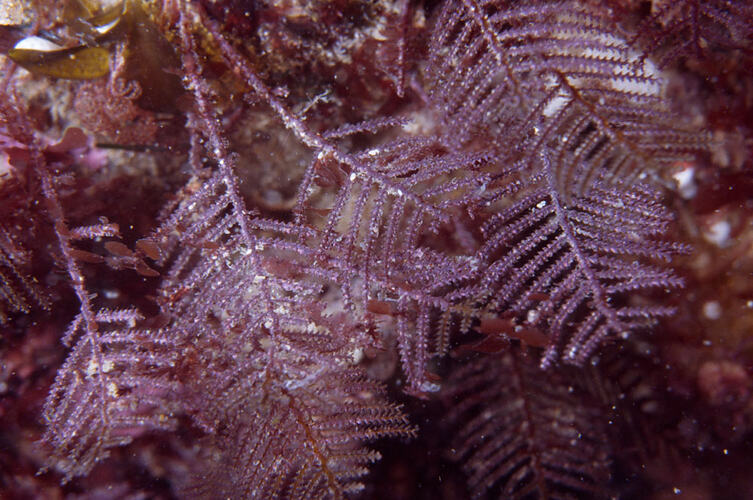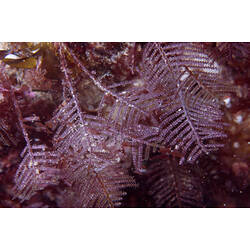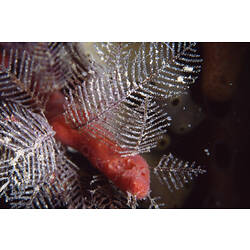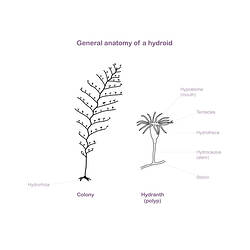General Description
Colony of individual polyps (hydranths) joined by root-like network of tubular stolons at the base. Colony shape is feather-like (pinnate). Colour: dark brown, older stems often overgrown by pink coralline algae. Up to 8 cm long.
Biology
Stems of these hydroids often wash up on beaches. The hydroids grow and are fertile throughout the year. They are the only species in this genus group and are native to southern Australian and New Zealand waters. The species was probably originally collected from Western Australia by the French Baudin expedition in 1802. The type specimens are in the Natural History Museum, Paris, labelled as "Mers Australes ou de la Nouvelle Hollande".
Distribution
South Africa, southern Australia and New Zealand.
Habitat
Subtidal, epiphytic on the holdfasts of red and brown algae, often Stenocladia australis, Phacelocarpus labillardieri, Scytothalia dorycarpa and Acrocarpia paniculata.
More Information
-
Animal Type
-
Animal SubType
-
Brief Id
Long elegant stems with a harsh texture, stems do not shrivel on drying.
-
Maximum Size
8 cm
-
Habitats
-
Diet
Plankton or Particles
-
Diet Categories
Plankton
-
Hazards
Generally not harmful but still able to sting bare skin.
-
Endemicity
-
Commercial
No
-
Conservation Statuses
DSE Advisory List: Not listed, EPBC Act 1999: Not listed, IUCN Red List: Not listed
-
Depths
Shallow (1-30 m)
-
Water Column Locations
On or near seafloor
-
Taxon Name
-
Scientific Author
(Lamouroux, 1816)
-
Common Name
Hydroid
-
Phylum
-
Class
-
Subclass
-
Order
-
Family
-
Genus
-
Species Name
elongata




